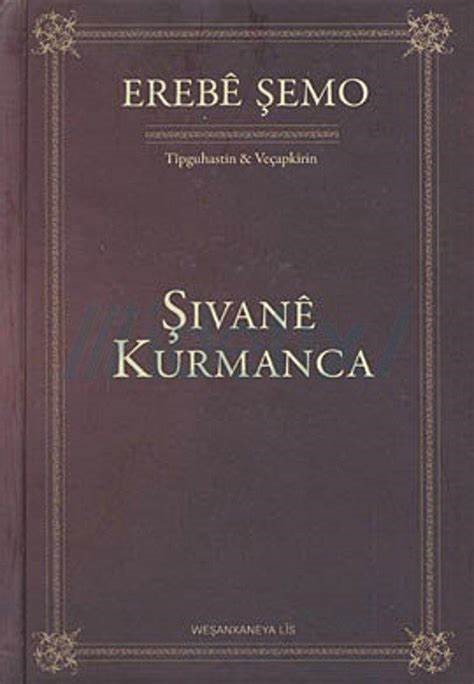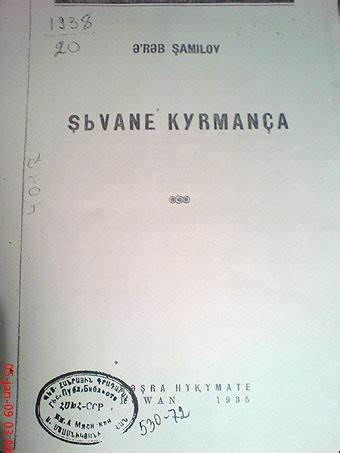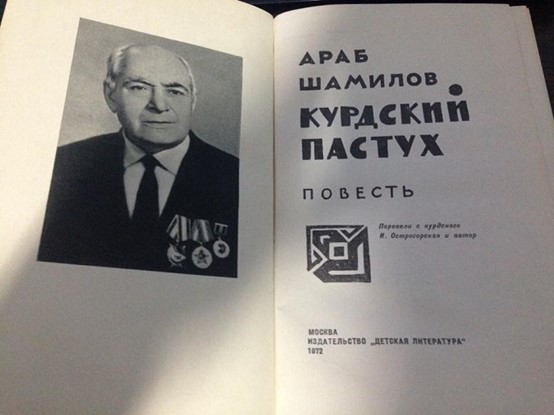Elan Muhammad
The Kurdish author, "Arabi Shamo" or "Arab Shamilov" who is known as the Kurdish novel father, according to most of the researchers, has written the first Kurdish novel called "The Kurmanj Shepherd" and published it. Thus, "The Kurmanj Shepherd" is known to be the first Kurdish novel in the history of Kurdish literature.
This novel was written and published in the Marogoulov Latin alphabet- which was prepared by Isak Marokoulov and Arabi Shamo in 1929- and the novel was published in 1935 by the publication company Rawan Hokoumat.
Later, "The Kurmanj Shepherd" was translated into Russian. "Basil Nikitin" translated this book from Russian to French in 1946 and "Nouraddin Zaza" translated the French version of this novel into Kurmanji in 1947. As a result of the translation of this book, the title of the novel became "The Kurdish Shepherd". This novel was published under its original title, The Kurmanj Shepherd, in 2009 as the 75th work of "Lise" Publication Company and as the 21st work of "Ahmad Khani" Publication Company. The book was edited by the Kurdish author, translator, and linguist, Mustafa Aydoghan. In the preface of this novel, Mustafa Aydoghan emphasizes on most of the novel and Arabi Shamo's characteristics. Aydoghan talks about this work's experience and its story elaborately.

The book discusses the memories of the author in his childhood and youth and the nomad Kurds from the Caucasus. Arabi Shamo illustrates his life hardships and his nation's difficulties in a documented form. It is important to say that this work clarifies many things about that time.
Arabi Shamo shows his childhood and youth life and his nation's social situation, the Kurds of Caucasus in a detailed way professionally like a colorful painting painted by a beautiful Kurdish girl and he presents it to the reader. In the last chapters of his novel, the author talks about the great Revolution of 17 and the Civil War.
The readers of this novel will witness a war that happened at that time. The novel illustrates struggles and conflicts in society, the war between the authority and the society. The World War began in 1914 and a part of it happened on the borders of Russia and the Ottoman lands. The novel also talks about the post-war hardships and how difficult it was to preserve the successes they had gained and it shows the images related to that time very well. The author of "The Kurmanj Shepherd" impresses the reader with the war and its experiences.
One can say that Arabi Shamo has written a memoir. A large part of the novel is about the traditions, folklore, and customs of the Kurdish people. The novel also clarifies the hardships they had to face in addition to the difficult work of being a shepherd or farmer at that time.

"Our bed was made of hay. We used to spread it on the ground and put a "basir" over it which was made of soft plants. Our pillows were made of the same plant. We used to cover ourselves with many things. When we, the children, were going to bed, we used to fight a lot. All of us would want to sleep in the middle because it was warmer. Since I was the youngest, they would give up that comfortable spot for me."
The author has established his novel's basis on two major things, either a descriptive illustration or narrating an event that is mostly based on his own perspective. However, it seems that Arabi Shamo had paid more attention to the events. The suffering he expresses while narrating those events is highly considerable. That is, the novel is based on a social foundation.
Especially when he talks about his village, farm, and mountains, he makes the reader feel as if they are in that place seeing all those scenery and places and feeling the smells as well.
Source:
"W" magazine, an article about Arabi Shamo and The Kurmanj Shepherd









